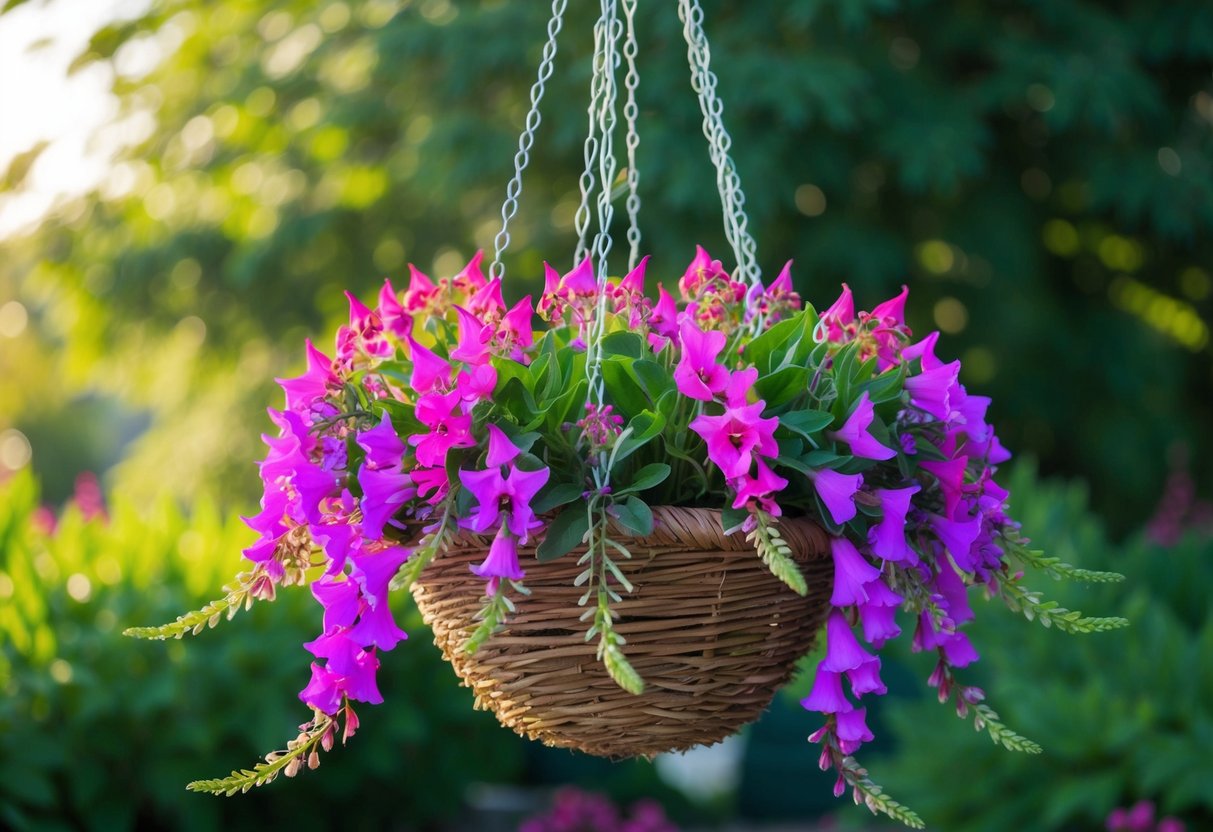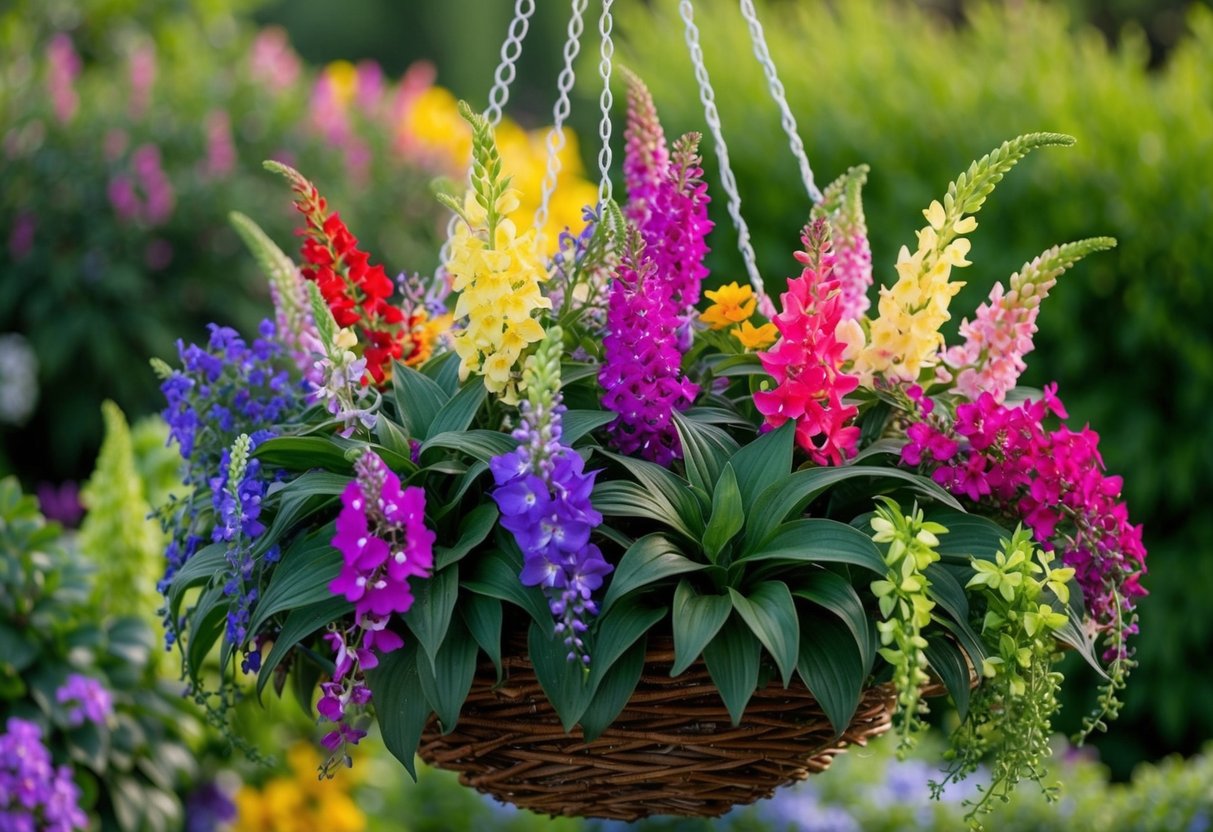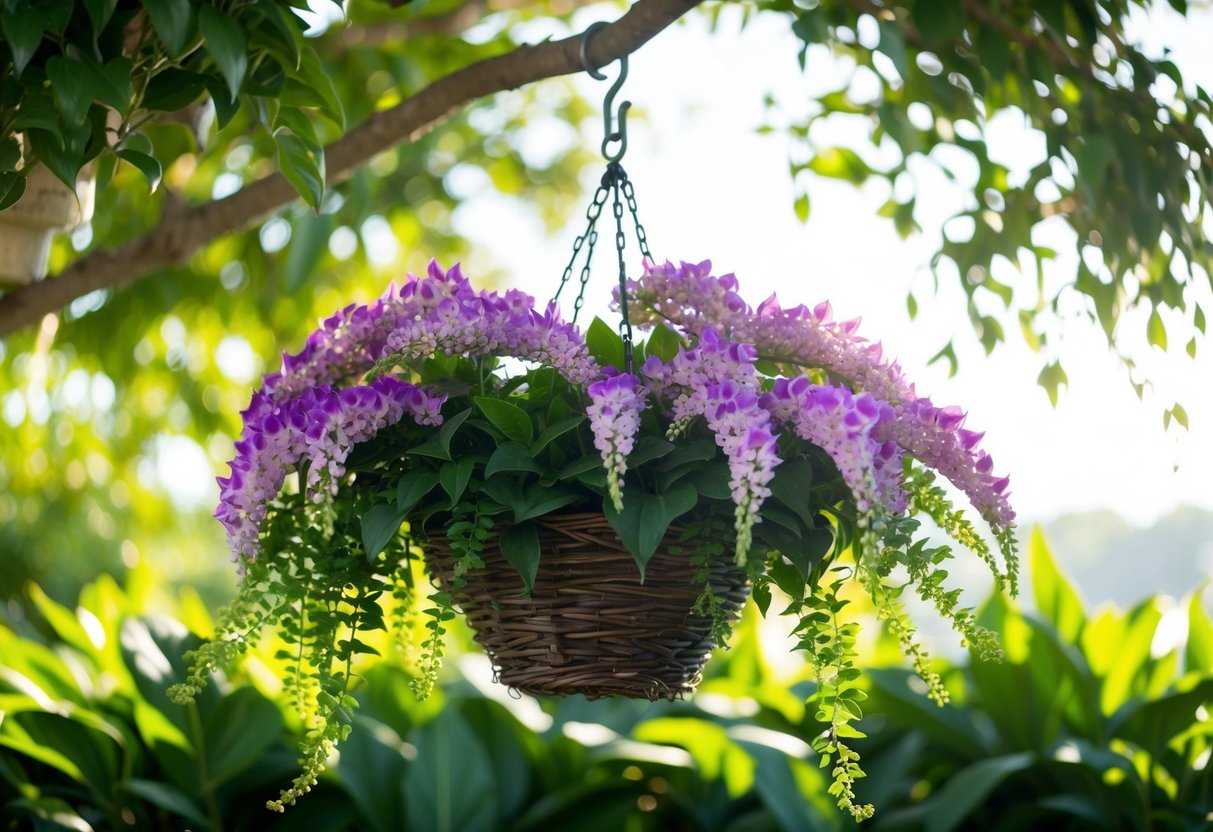How Many Lobelia Are in a Hanging Basket? Tips for a Stunning Display
Creating a vibrant hanging basket with lobelia can transform your garden space into a colorful oasis. When you consider how many lobelia plants to use, it usually depends on the size of the basket. For a typical 12-inch basket, you should plant three lobelia to achieve a beautifully full look.

Lobelia thrives in well-drained environments, so you need to choose the right basket. Opt for one with good drainage, like those made from wrought iron or plastic. Keeping the soil moist and fertilizing monthly will help your lobelia bloom brilliantly throughout summer and into fall.
If you aim for a lush display, planting an odd number of lobelia, such as three or five, often gives the best visual effect. Adjustments based on basket size can ensure that your lobelia is healthy and thrives in the hanging basket arrangement you’ve chosen.
Choosing the Right Lobelia Varieties

When choosing lobelia, it’s important to know about the different species and color options. Knowing these can help you decide which type will work best for your hanging basket and the look you want to achieve.
Understanding Lobelia Species
Lobelia plants come in several species, each with its own traits. Annual lobelia, such as Lobelia erinus, is popular for hanging baskets. It has a trailing habit, making it ideal for cascading effects.
Other species, like Lobelia cardinalis (cardinal flower) and Lobelia siphilitica, are perennial and often used in garden beds for height and color. For a bold look, consider Lobelia tupa, known for its striking appearance.
Trailing and dwarf lobelia varieties are perfect for baskets. They grow quickly and are easy to care for. Choosing the right species will depend on whether you prefer a perennial or an annual display.
Color Variations and Their Impacts
Lobelia offers a range of colors, including blue, pink, purple, and white. Blue flowers are classic and calming, often used in gardens for their cool tones. They pair well with other plants due to their soft look.
Pink and purple varieties add brightness and can be used to create vibrant displays. White lobelias bring a touch of elegance and can contrast nicely with more colorful plants.
Mixing different lobelia colors can create a stunning visual effect in your hanging basket. Consider the surrounding environment and what effect you wish to create when choosing lobelia colors.
Preparing the Hanging Basket

Getting ready to plant lobelia in a hanging basket involves choosing the right basket and ensuring the soil is perfect for growth. Proper selection of materials and careful preparation are key to healthy plants and vibrant flowers.
Selecting the Proper Basket
When selecting a basket for your lobelia, drainage is essential. Lobelia needs well-drained soil to flourish, so a basket with adequate drainage holes is a must. Consider options like wrought iron or plastic baskets, which provide good drainage.
Self-watering baskets are a smart choice if remembering to water regularly is a challenge. A self-watering system helps maintain consistent moisture levels, benefiting your lobelia. The size of the basket should suit your space and the number of plants you wish to use. Remember, a crowded basket can hinder plant growth, so opt for a size that allows your lobelia to spread comfortably.
Soil and Compost Fundamentals
For lobelia, using the right soil mix is crucial. Opt for well-draining soil to prevent water-logging, which can harm the roots. A mix that includes compost adds nutrients to the soil, promoting healthy growth. Look for a fertile soil blend with ingredients like peat moss or perlite to improve drainage and nutrient retention.
Regularly refresh your soil every 8-12 weeks to keep it nutrient-rich. Overcrowded roots in the soil may indicate the need for a change. By maintaining a healthy soil environment, you’ll support your lobelia’s development and vibrant blooms. Applying a balanced liquid fertilizer every 2-4 weeks will also encourage strong growth and flowering for your plants.
Planting and Care Instructions

Creating beautiful lobelia hanging baskets requires thoughtful planting and care. Proper planting methods, careful watering routines, and maintenance practices like deadheading keep your lobelia vibrant and blooming.
How to Plant Lobelia in a Basket
Choose a hanging basket with good drainage. Fill it with a quality potting mix, leaving a little space at the top. When preparing to plant, gently remove the lobelia plant from its container.
Space each plant about 4 to 6 inches apart for optimal growth. Place the roots in the soil, slightly firming it around each plant.
Consider adding a layer of mulch on top to retain moisture. Hanging your basket in a spot with full sun to partial shade can help ensure the plants receive enough light to thrive.
Watering and Fertilization Techniques
Watering lobelia is crucial for healthy growth. It’s best to keep the soil consistently moist, especially during hot weather.
Watering should be done early in the morning. This allows the plants to absorb moisture before the sun becomes too intense. Use a watering can with a narrow spout to reach the soil directly.
For fertilization, apply a liquid fertilizer every 2-4 weeks. Alternatively, use a slow-release fertilizer mixed into the soil at planting time to support continuous growth.
The Importance of Deadheading
Deadheading is essential to encourage more blooms. As lobelia flowers begin to fade, pinch off the spent blooms with your fingers or a small pair of scissors.
Removing old flowers helps the plant conserve energy and promotes new growth. Regular deadheading keeps your basket looking tidy and vibrant.
Pruning back overgrown stems can also improve airflow, reducing the chances of mold or disease. This simple maintenance task helps keep your lobelia healthy all season long.
Understanding Light and Climate Needs

When growing lobelia in hanging baskets, it’s important to consider their light and climate preferences. Lobelia plants have specific sunlight needs and thrive in particular temperature ranges to ensure healthy growth.
Sunlight and Shade Preferences
Lobelia prefers full sun to partial shade, depending on the variety. It’s crucial to monitor how much sunlight your basket receives throughout the day. For most types, aim for at least 4-6 hours of direct sunlight for optimal growth. This will suit well in summer containers that can be placed in sun or shade as needed.
If you’re in an area with intense sun, providing some afternoon shade can help prevent the plants from wilting. Hanging baskets are great because you can easily move them to different spots depending on sunlight needs. Keep an eye on the foliage and flowers, as they will often signal if more or less light is required.
Temperature and Hardiness Zones
Lobelia thrives in mild climates. They are particularly suited to USDA Zones 10-11 but can also grow in other zones if managed correctly. These plants do best in moderate humidity and temperatures ranging from 60°F to 85°F.
In cooler climates, lobelia can be treated as annuals or moved indoors during the cold months. Be cautious of sudden temperature changes, which can stress the plants. If you live outside the ideal zones, consider bringing your hanging baskets inside at night or during cool spells to protect them. They will appreciate the consistent warmth and reduced exposure to harsh conditions.
Pests, Diseases, and General Maintenance

Taking care of your lobelia involves staying alert to common pests and diseases. Routine maintenance ensures your plants stay vibrant and healthy. Focusing on specific strategies like effective pest control and addressing issues like root rot and wilting can save your garden.
Keeping Your Lobelia Healthy
Lobelia plants can fall victim to root rot and various fungal diseases. To keep them healthy, ensure they have good drainage. Overwatering leads to soggy soil, which causes root rot. Water the soil gently and consistently, but ensure it doesn’t stay too wet.
Provide enough sunlight, which can help prevent wilting, but avoid direct sunlight during extremely hot periods. Monthly application of a balanced fertilizer can encourage strong growth. When plants stop flowering, reduce the amount of fertilizer.
Effective Pest Control Strategies
Pests like slugs and snails may be attracted to lobelia. To control these pests, consider using barriers or hand-picking them at night.
Neem oil and insecticidal soap are natural options against small insects. Applying these products in the late afternoon or early evening prevents rapid evaporation and increases effectiveness.
Watch for signs of pest damage, such as holes in leaves or drooping stems. Early detection allows you to act quickly and protect your lobelia. With regular care, you’ll maintain a healthy, vibrant garden that thrives throughout the season.
Attracting Wildlife with Lobelia

Lobelia plants are a wonderful choice if you want to invite a variety of wildlife into your garden. They are known for their bright colors and delicate shapes, which can attract creatures like hummingbirds and other pollinators.
Making Your Garden a Pollinator Paradise
To create a pollinator-friendly space, consider using lobelia in your garden. These plants, especially in their vivid shades of blue and purple, are great for drawing in bees and other pollinating insects.
The slender blooms of lobelia make them ideal for hanging baskets or as part of a container garden. Hummingbirds are particularly fond of red varieties, so including these can make your garden even more appealing to them.
For the best results, choose a spot that gets plenty of sun and ensure your soil is well-drained. Lobelia is often used as an annual flower for gardens, but in some climates, it can thrive as a tender or hardy perennial.
Regular watering and care ensure these plants keep thriving, adding beauty and attracting all-important pollinators to your green space.







